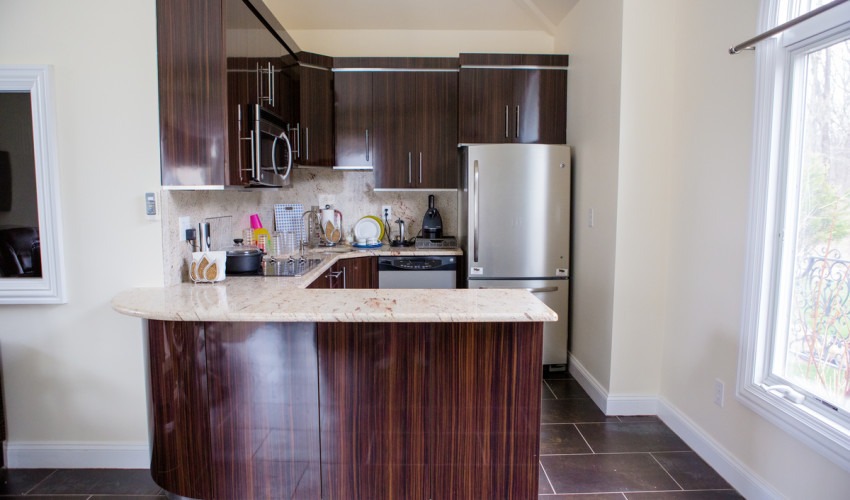One of the most exciting parts of choosing a new stone for your kitchen or bathroom countertops is deciding on the color. From soft, pale marbles to bright, multi-hued granite speckles and swirls, the options can be overwhelming. How do you know which color would look best in your space no matter how trends change? Below, we’ve got 5 essential considerations you need to make when selecting the perfect stone you’ll love for years to come.
Overall aesthetic
If you’re completely renovating your kitchen or bathroom, you need to decide on the overall look and feel of your room before you choose the color of your stone. This will ensure your room will look balanced and cohesive when the work is done. If you’re not renovating the rest of the room, then you’ll need to make sure the color of the stone suits the existing furniture and features of the room to prevent your new stone from clashing with the current color scheme.
To get started, consider these general rules of thumb:
A kitchen or bathroom that is classic, stately and elegant looks best in simple shades of black, white, and cream. A shabby-chic or relaxed, lived-in look is great for pinks, greens, and browns while a more modern and contemporary look can handle bright reds and oranges. Still, feeling a little lost? Take pictures of your interior and bring them with you when you look at stones. You’ll be able to match colors much more easily with the room right in front of you, rather than trying to match shades in your mind.
Check the light
A room that doesn’t get a lot of natural light can easily be overwhelmed by dark countertops. The exception? If the walls and cabinetry are white or very lightly colored, a dark countertop will instead act as a striking accent piece.
Likewise, a lightly colored countertop could look lost or washed out in a kitchen or bathroom that gets a lot of natural light unless the rest of the room is darkly colored. Also, consider getting a stone with some sparkle to it if your room is really bright: The light will pick up threads of gold, silver, and copper and offer a subtle glint to make the room (and your stone!) look even more luxe.
Consider the Cabinets
Because cabinets take up a lot of visual space in both kitchens and bathrooms, you’ll have to balance out the cabinet color with your countertop to make sure that one hue doesn’t dominate and overwhelm the room. A good rule of thumb is if your cabinets are dark, go for a lighter-colored stone, and vice versa. This contrast will keep the room visually balanced and will prevent the room from looking too heavy or washed out.
Accent or focal piece?
Next, consider whether you want your countertops to be the centerpiece or a supporting role in your kitchen or bathroom. A well-balanced, monochromatic color scheme ensures that no one particular feature stands out in the space, allowing the eye to travel to all elements equally. To achieve this look, you should choose a stone within the same color family as your cabinets, appliances, and fabrics, allowing it to play a complementary role in the room.
If you’re looking for your countertops to be the centerpiece of your room, well, the world is your oyster! Stone is available in the most striking shades imaginable — from deep, dark reds, to jade green, to rich cobalt blue. To achieve this look, you’ll want to find a stone that compliments the color scheme of the room but isn’t in the same color family. This will allow the stone to stand alone and be the first thing the eyes see when entering the room.
Any texture?
Texture comes in the form of speckles and swirls of different colors within the stone, all of which have their own look and feel. Speckled stones like granite or veined and swirled stones like marble can have variations within the same color family (think whites, grays, browns, and oranges), which creates an overall blended and balanced look. Likewise, stones can have striking and unique color contrasts that can create more of an accent in a room, as the variation is more noticeable and will attract the eye more than a stone with less color variation.
Choosing the right stone color can be more complex than it looks. Although the choices can be overwhelming and there are a lot of options to consider, the most important thing to keep in mind is balance. Whether you want your stone to be an accent piece or a complimentary feature, balancing the stone color with the other light and dark hues in your room will ensure visual harmony and will help you achieve a look you’ll love for years to come.

